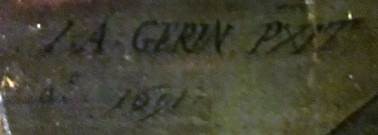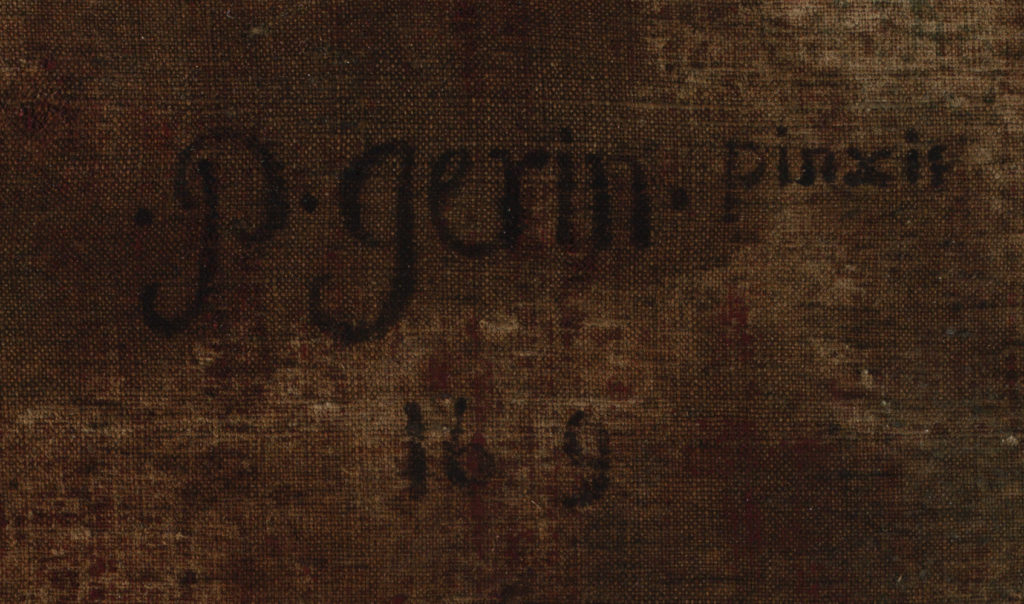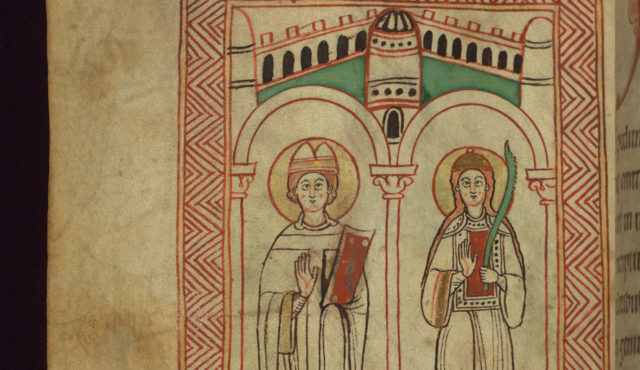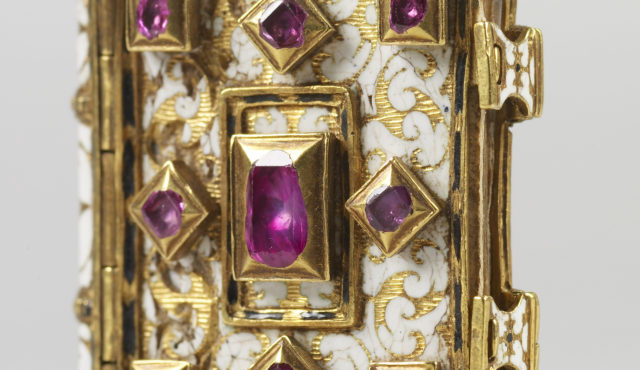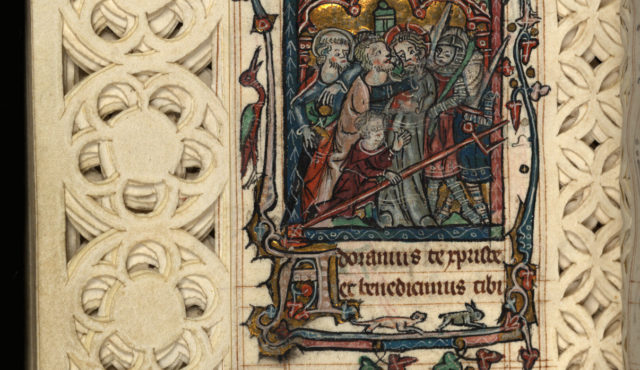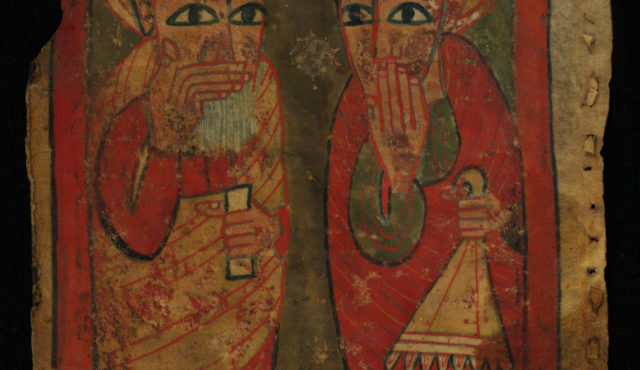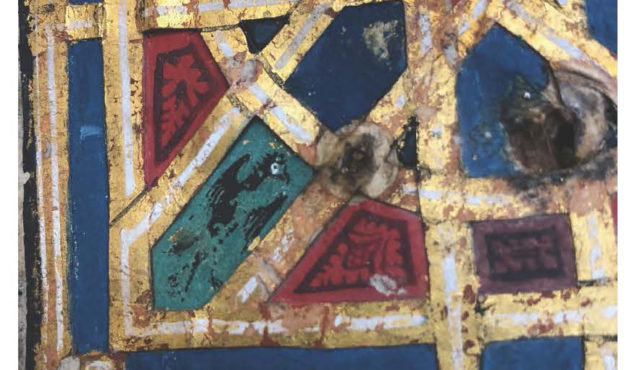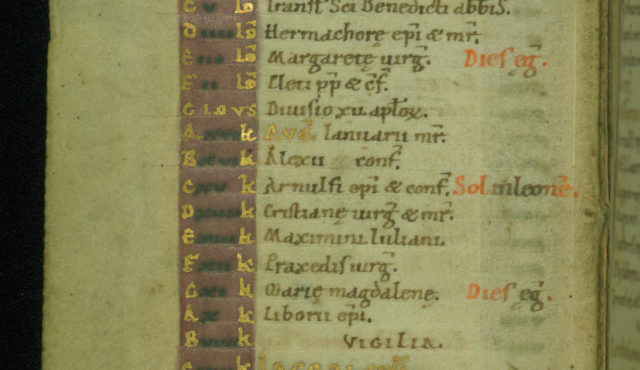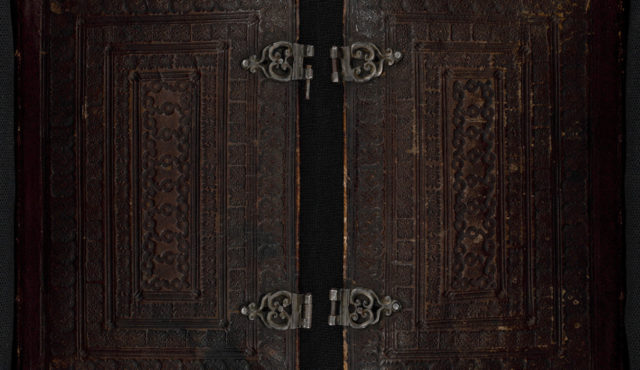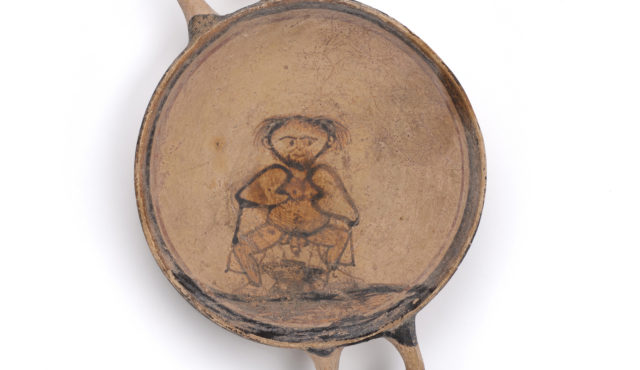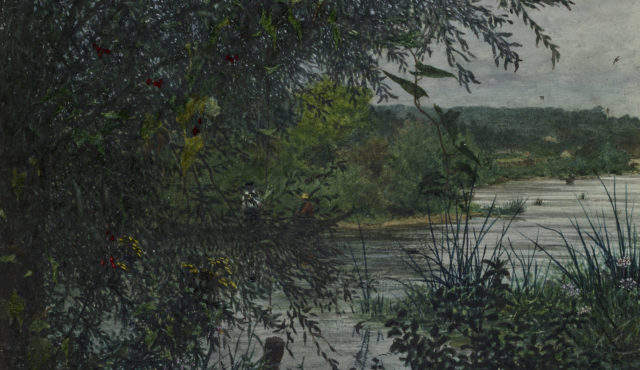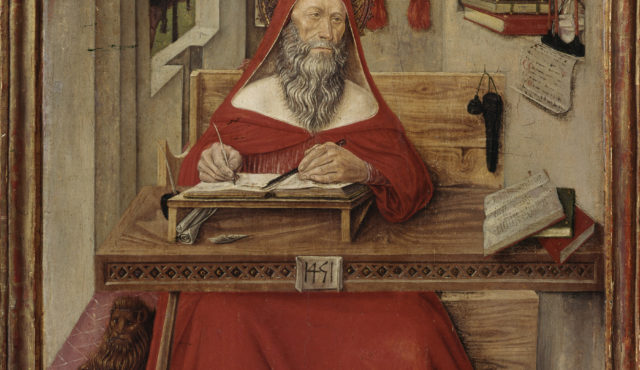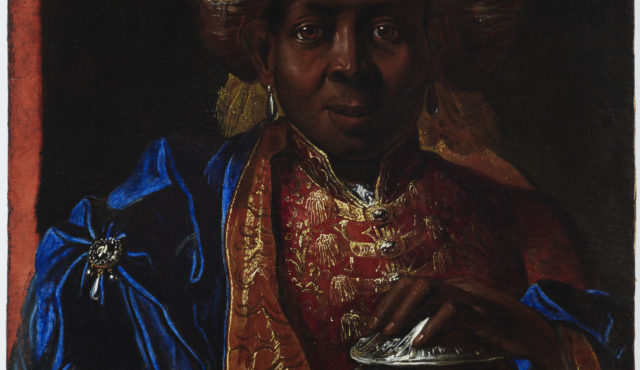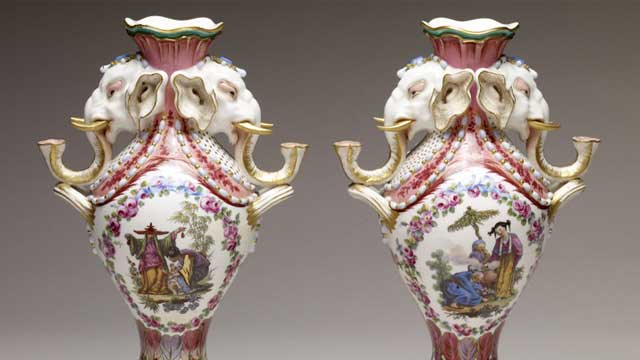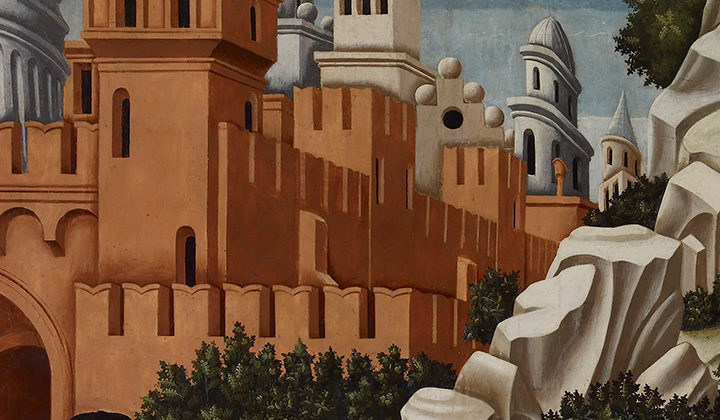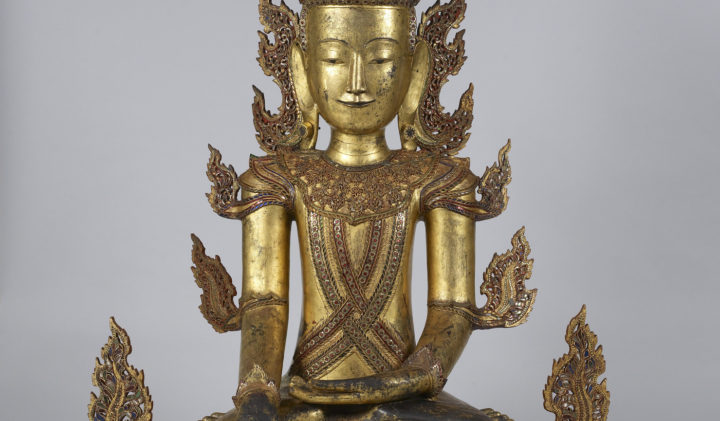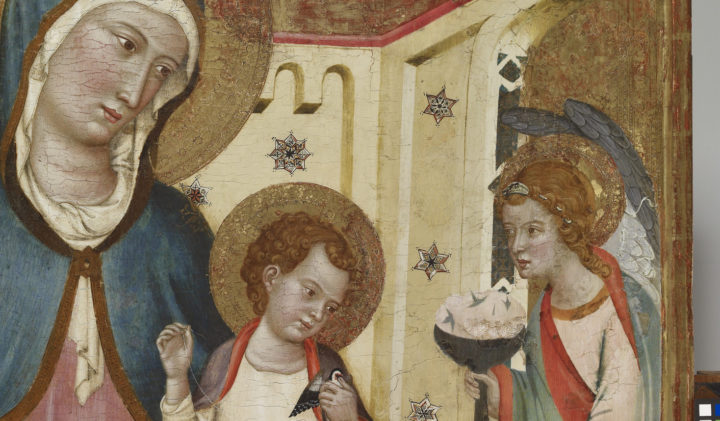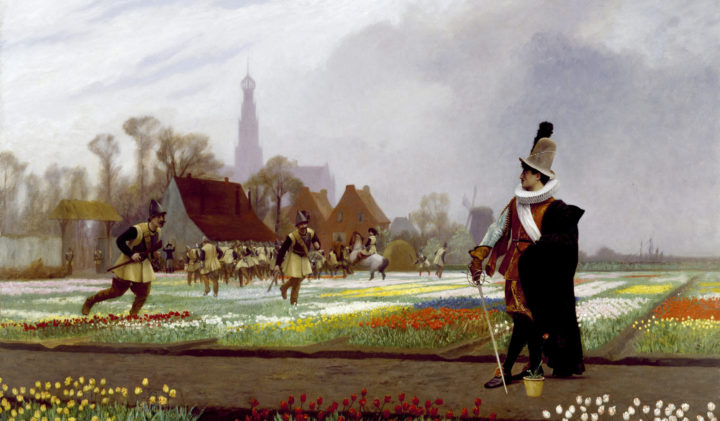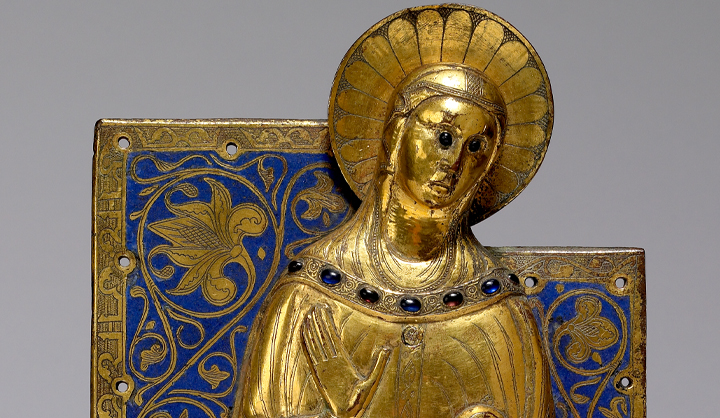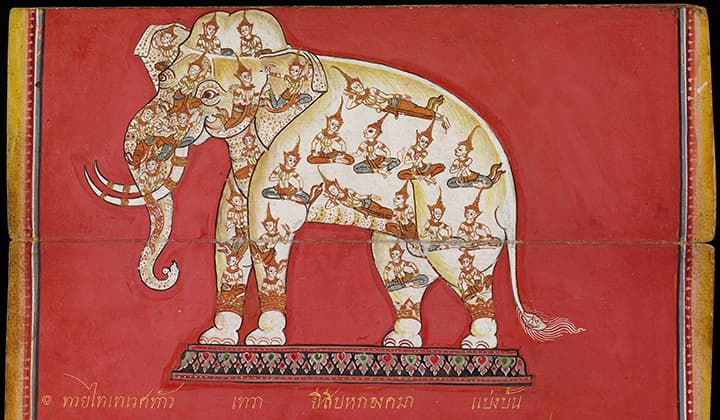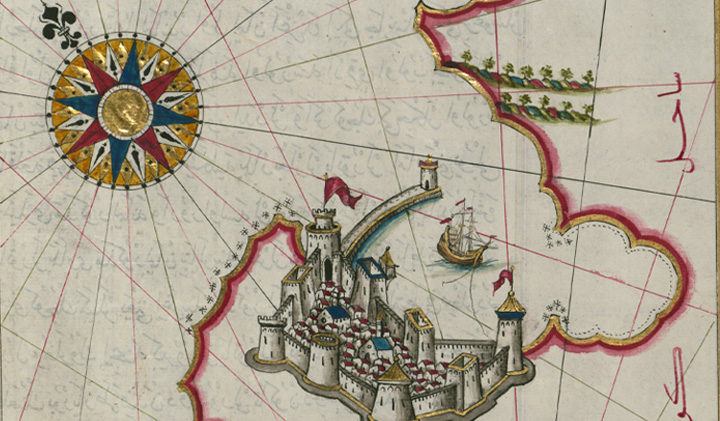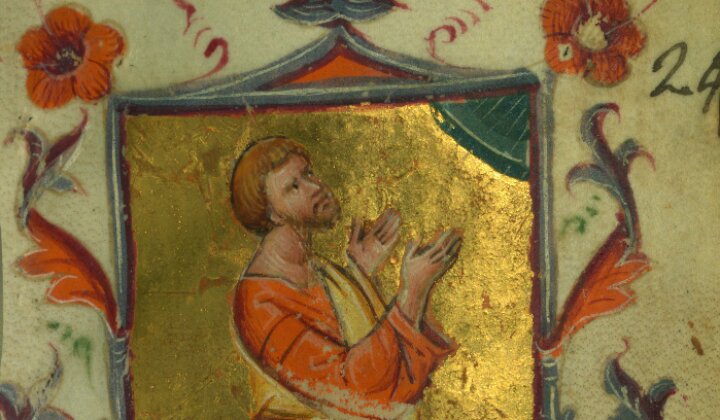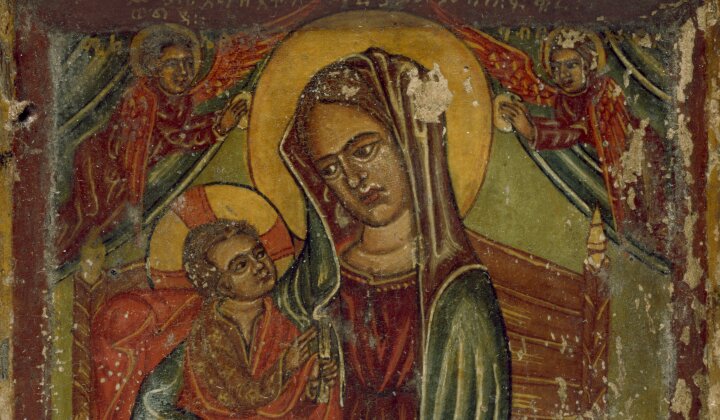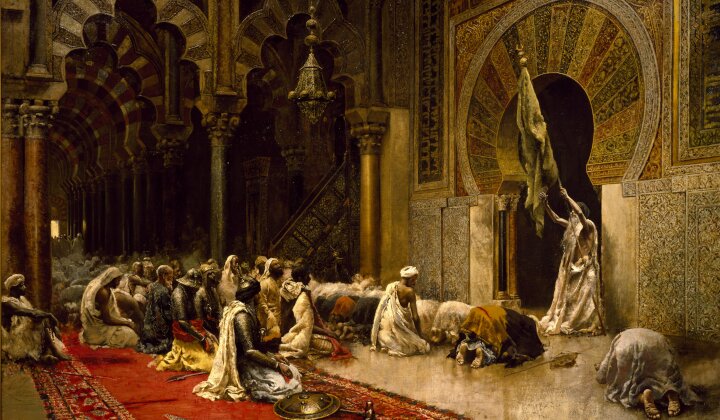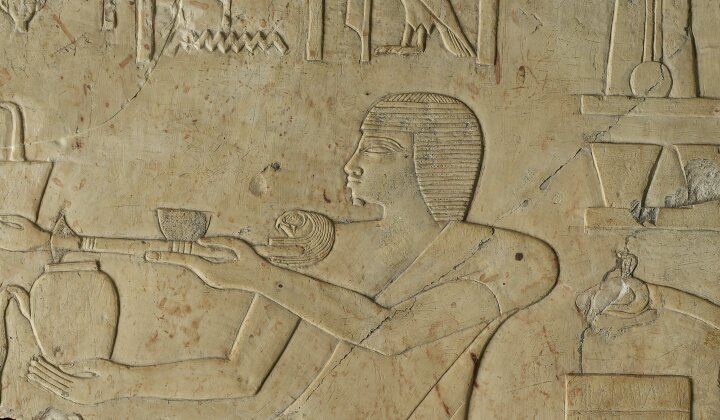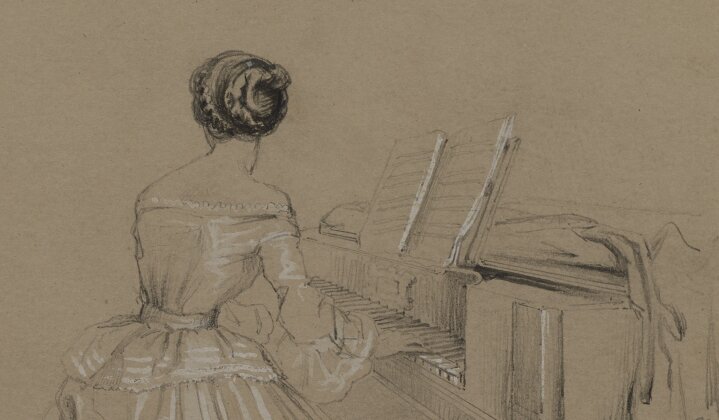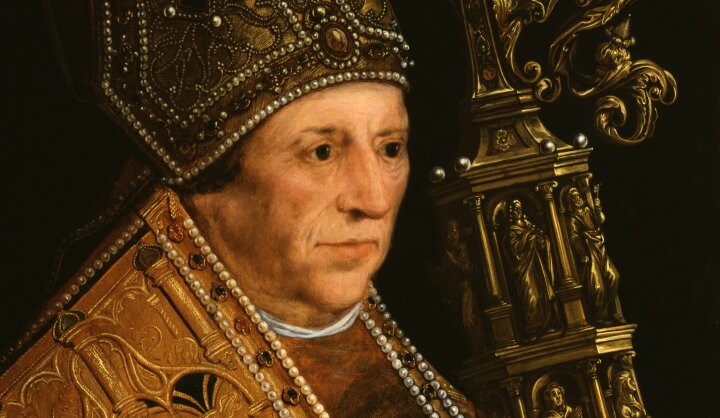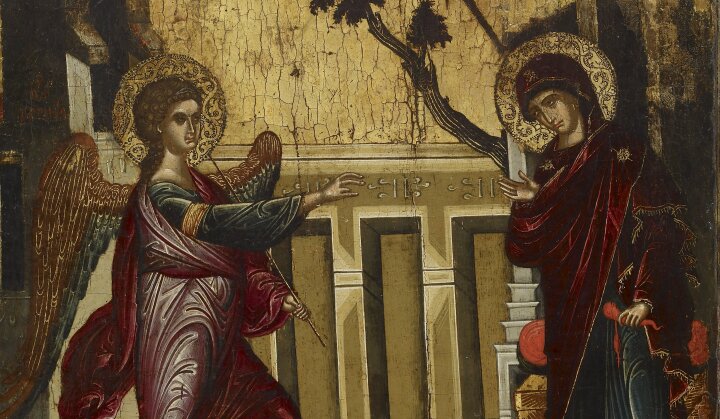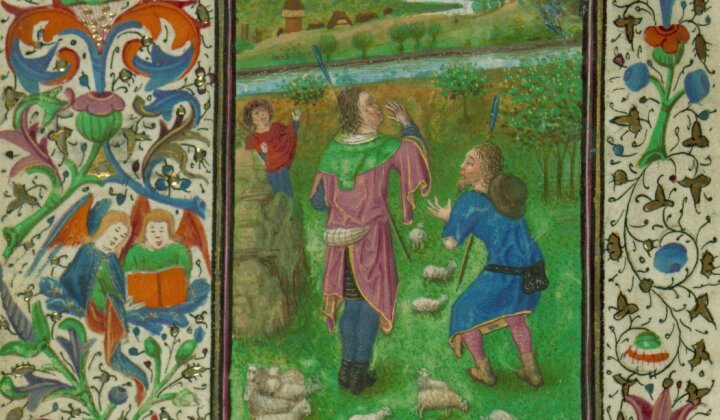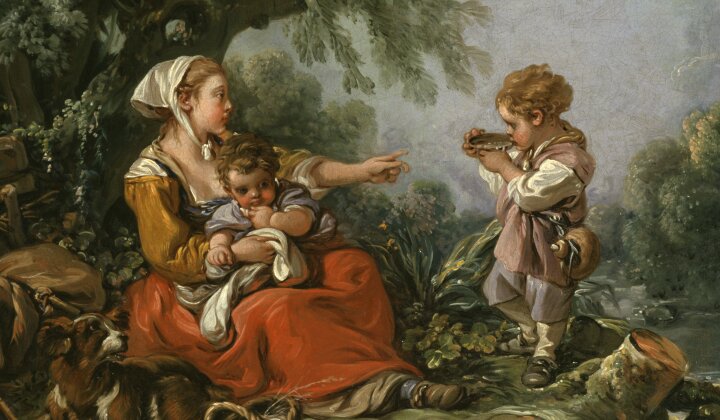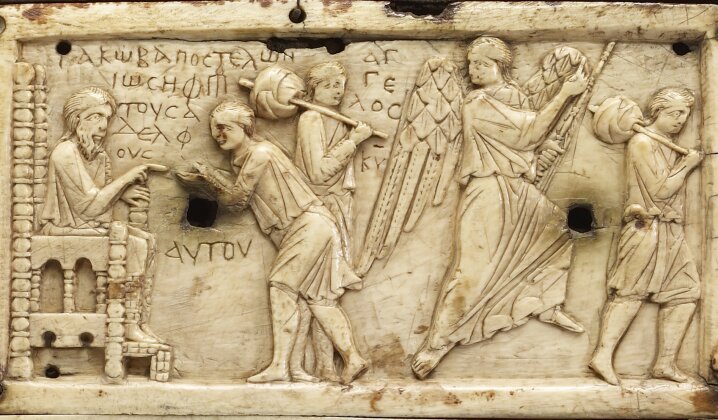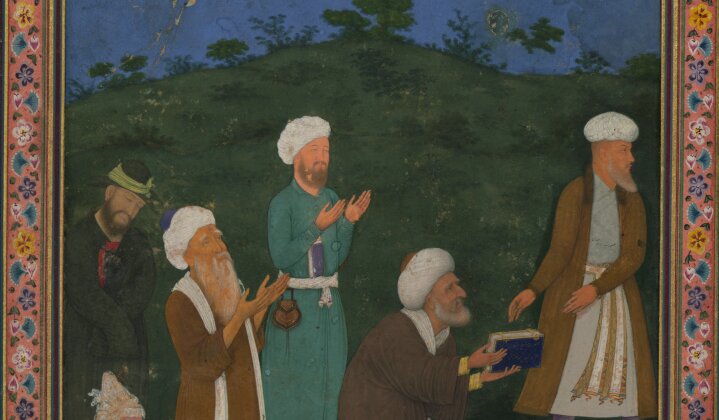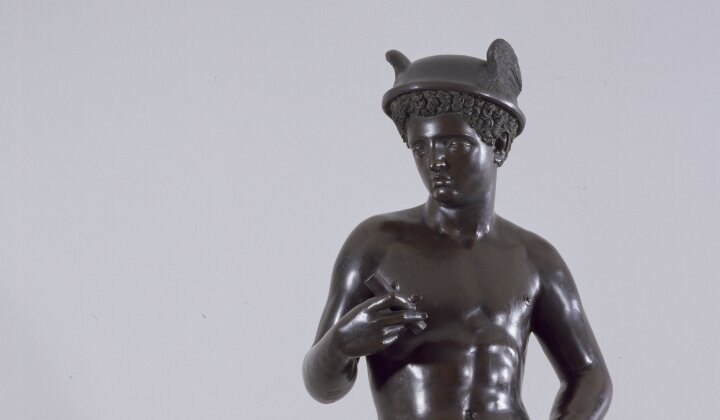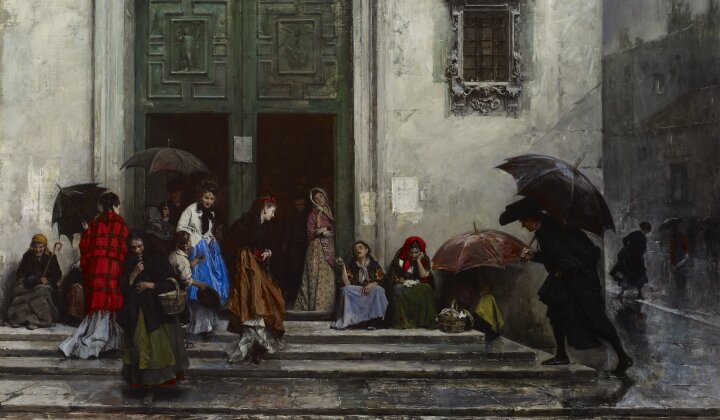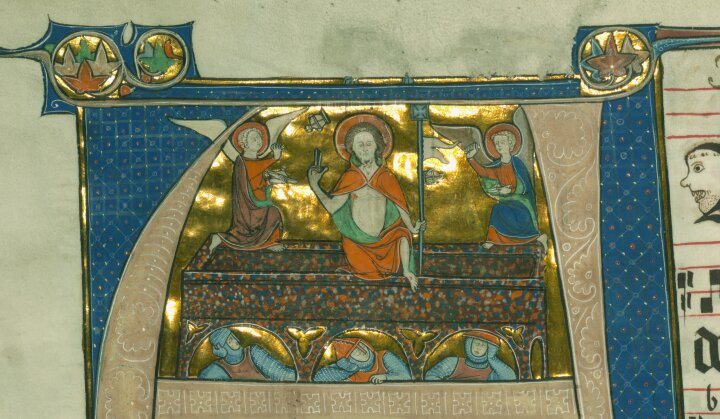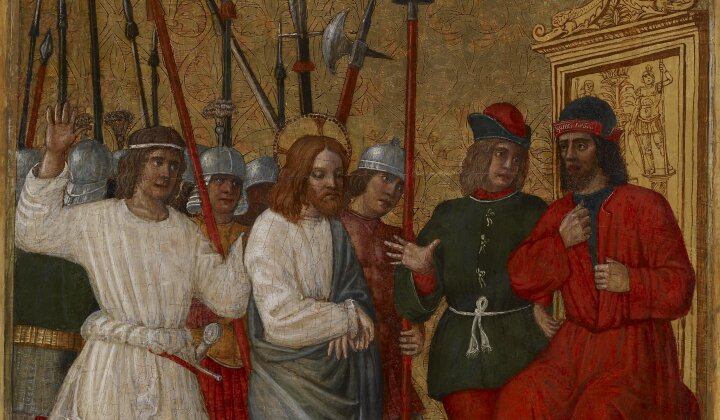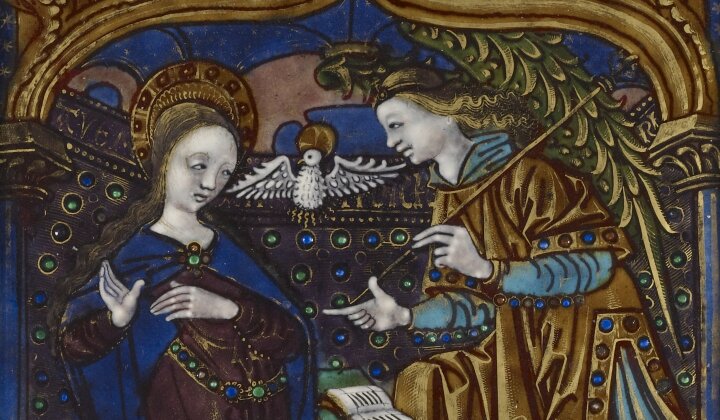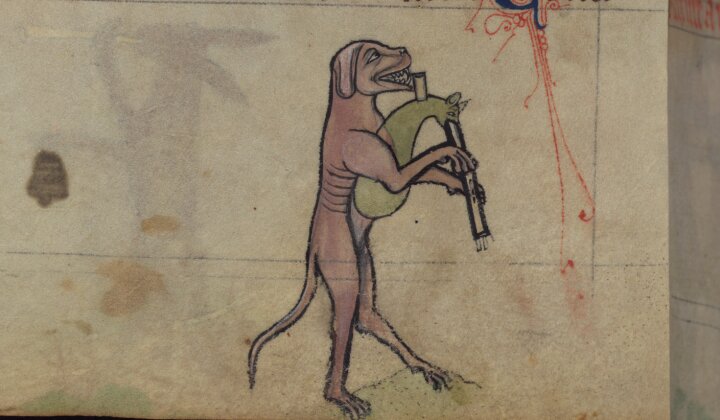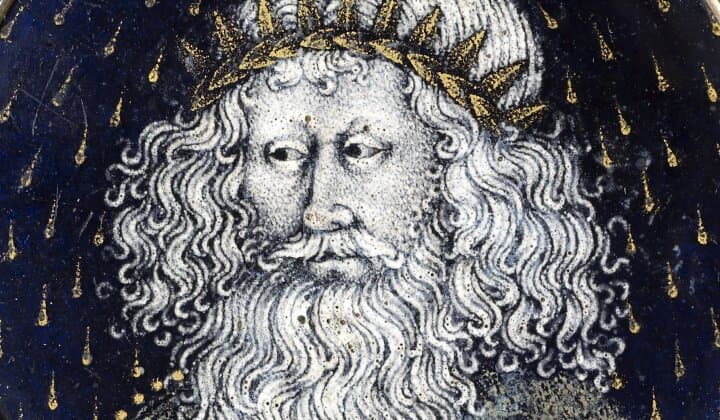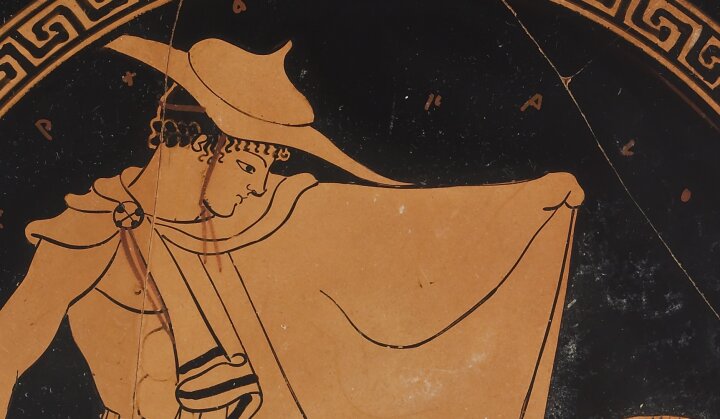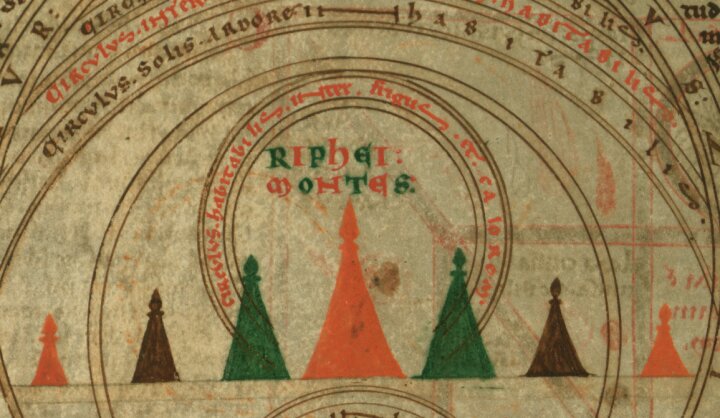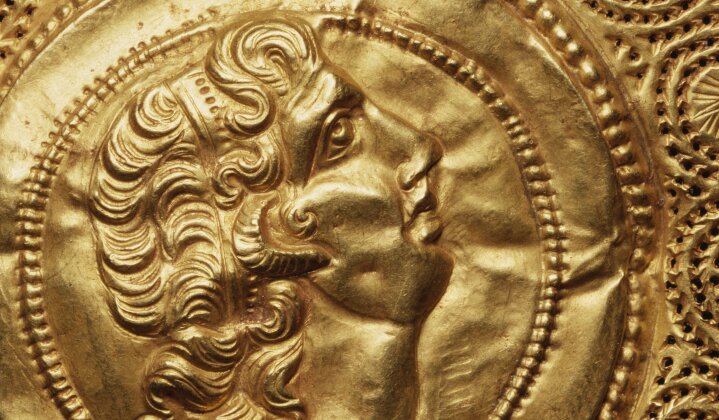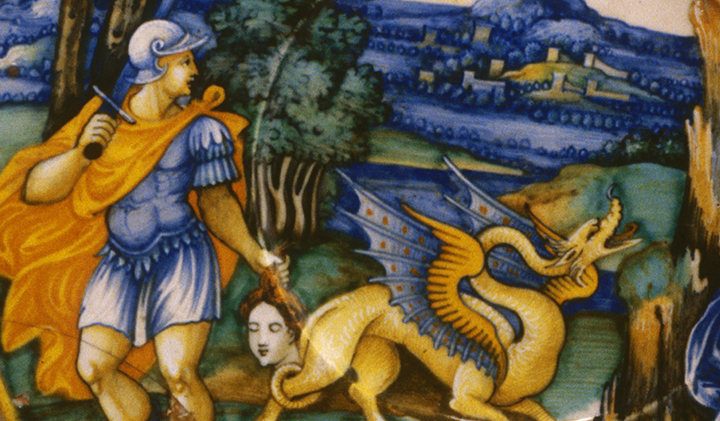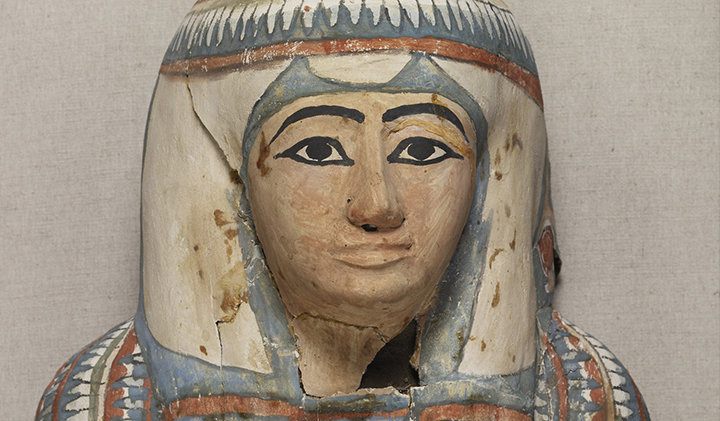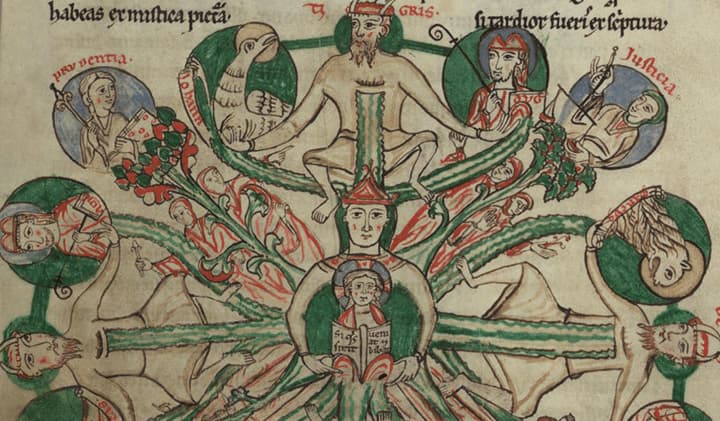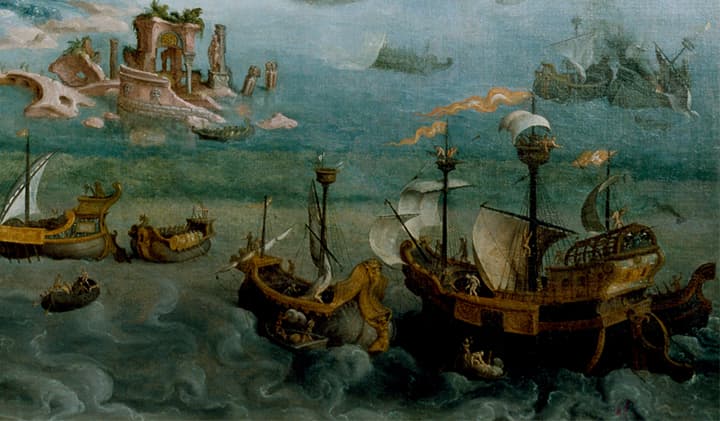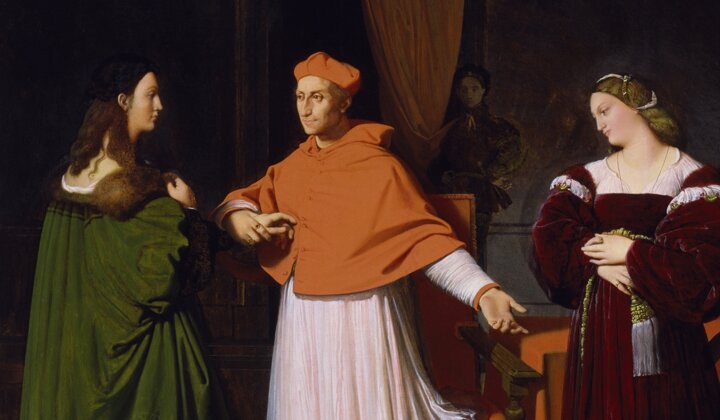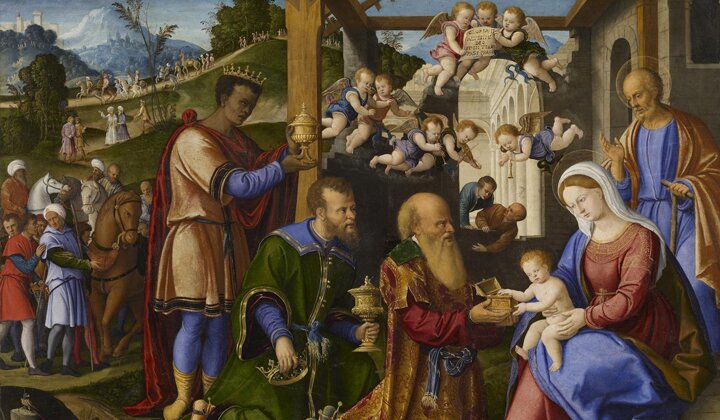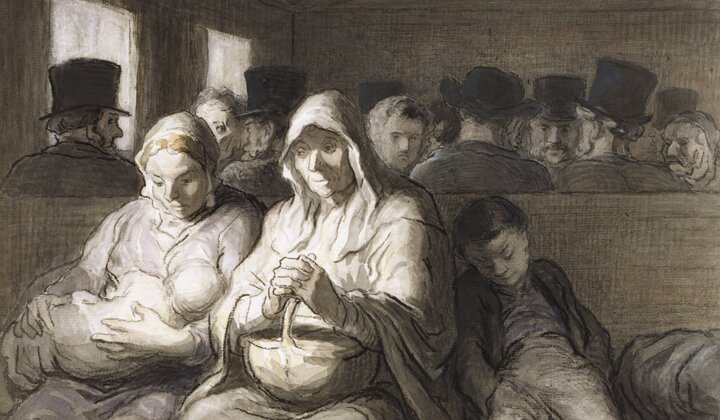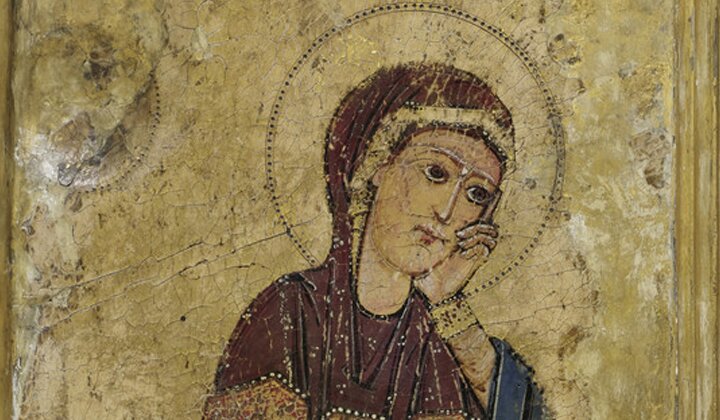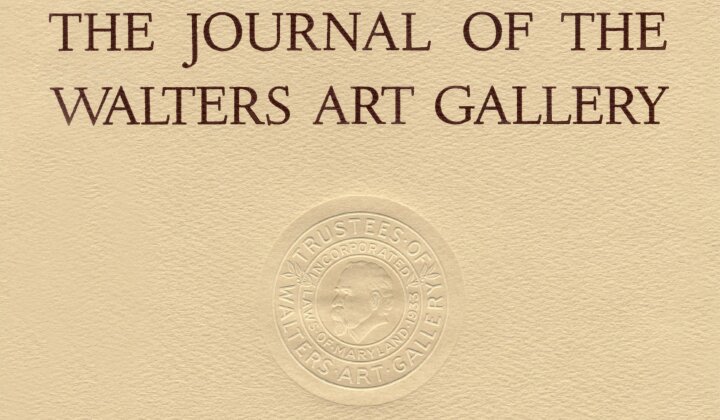
Unknown French Artist, Balthazar, ca. 1700, France, oil on canvas, approx H: 34 3/4 × W: 27 1/4 in. (88.3 × 69.2 cm). The Walters Art Museum, Baltimore, museum purchase with funds provided by the W. Alton Jones Foundation Acquisition Fund, 2018, acc. no. 37.2938
A compelling, life size, half-length painting of a Black man was purchased by the Walters Art Museum in December 2018 (fig. 1).[1] There are multiple intriguing questions to be addressed about this mesmerizing image, most significantly the man’s personal identity and his role in the execution of the painting; however, for this short, introductory note on the painting I will limit myself to exploring the separate, perplexing one of artistic responsibility.
An initial, brief review of the nominal subject will enable a discussion of its representation. The man’s costume immediately identifies the role he plays as one of the magi or wise men (astrologers) described in the New Testament Book of Matthew (2:1–12) as having followed a new star to the place of Christ’s birth in order to pay him homage.[2] With the passage of time, texts by influential Catholic theologians such as Origen of Alexandria (third century) and the Anglo-Saxon Benedictine monk known as the Venerable Bede (672–735) had proposed that there were three magi (since the gospel references three gifts of gold, frankincense, and myrrh), from the three parts of the world as then understood—Europe, Asia, and Africa. Bede associated these figures with the names Melchior, Gaspar (Casper), and Balthazar.[3] Subsequently, the view began to prevail that they must have been kings, given Old Testament prophecy and the costliness of their gifts.[4] While specifics were disputed, in representations of the three by 1500, the youngest was usually depicted as Black, and, increasingly, all were accompanied by signs of kingship.[5] In the Walters painting, Balthazar’s status is conveyed by the subtle inclusion of a European royal crown atop the jeweled brooch on his turban. Since there is no evidence that the painting was ever accompanied by paintings of the other two kings, to avoid all doubt as to the subject, the silver vessel in which Balthazar carries his gift of myrrh for the Christ Child is decorated with a relief depicting the Adoration of the Kings.
The significant challenges in establishing artistic responsibility fall under two headings. There is a signature that is completely at odds with the style of execution. Then, the masterful depiction of Balthazar’s face, the core passage in the painting, will appear to many viewers to be infused by the artistry of Peter Paul Rubens (1577–1640). The latter would normally suggest a dating in the first half of the century; however, elements of current fashion in Balthazar’s costume definitely situate the painting in the ambit of the French court around 1700.
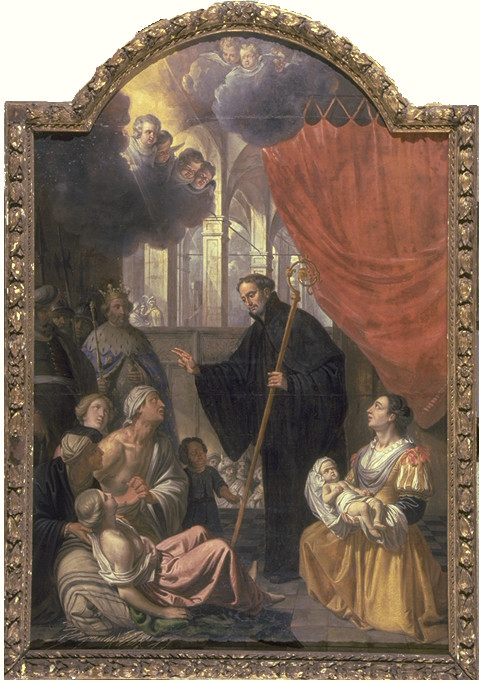
Jacques-Albert Gérin (French, ca. 1640–1702), The Miracles of Saint Gilles, 1691, France (Valenciennes), oil on canvas, H: 273.6 cm x W: 189.9 cm. Musée des Beaux-Arts, Valenciennes, 1952, acc. no. D.2013.0.2 © Photo Claude Thérriez
This painting was previously assigned to the little-documented Frenchman Jacques-Albert Gérin (Valenciennes, died 1702).[6] The canvas (unlined) bears a signature on the back to which I will turn after first comparing the Walters Balthazar to the single, extant painting that is both signed by Gérin and consistent with known elements of his biography. His Miracles of St. Gilles, 1691 (fig. 2), represents Valenciennes’s patron saint. The painting was first signaled in a publication of 1826 in the chapel of the municipal hospital, with other paintings removed from surrounding convents in 1794 when all Catholic orders in France were suppressed.[7] Even though many of the religious works upon which Gérin’s local reputation was based were likely destroyed around that time, The Miracles of St. Gilles was not the artist’s only representation of the saint. In 1683, Gérin delivered the last of eight cartoons for a series of tapestries on the saint’s life, to be produced in the local workshop of Philippe de May.[8] They are reported to have been commissioned in 1681 by the municipal government, but nothing more is known.[9] There is no reference to a composition similar to Balthazar in the scant literature on Gérin.
Although Valenciennes lay within the Spanish Netherlands before Louis XIV took control of the region for France in 1677, and major churches in the city displayed altarpieces by Antwerp’s leading painters such as Peter Paul Rubens and Anthony van Dyck (1599–1641), Gérin’s Miracles exhibits no hint of Flemish exuberance and color. The severe composition depends on clear volumes defined by line and cool grey tones of the skin as well as of the sculpted drapery in soft yellow and a kind of apricot, with accents in grey-blue, but virtually no brushwork or detailing that would draw attention to the surfaces.[10] This combination—quite the opposite of painterly qualities of Balthazar—marks Gérin as an adherent of the classicism then associated so famously with Nicolas Poussin (1594–1665).[11] In spite of spending much of his career in Rome, Poussin had a tremendous impact on his French homeland, where many of his finest paintings were to be found. For example, the earliest known owner of his limpid masterpiece Finding of Moses of 1638 (fig. 3), embodying visual properties reflected in The Miracles of St. Gilles, was the great landscape architect of Versailles André le Notre.[12]
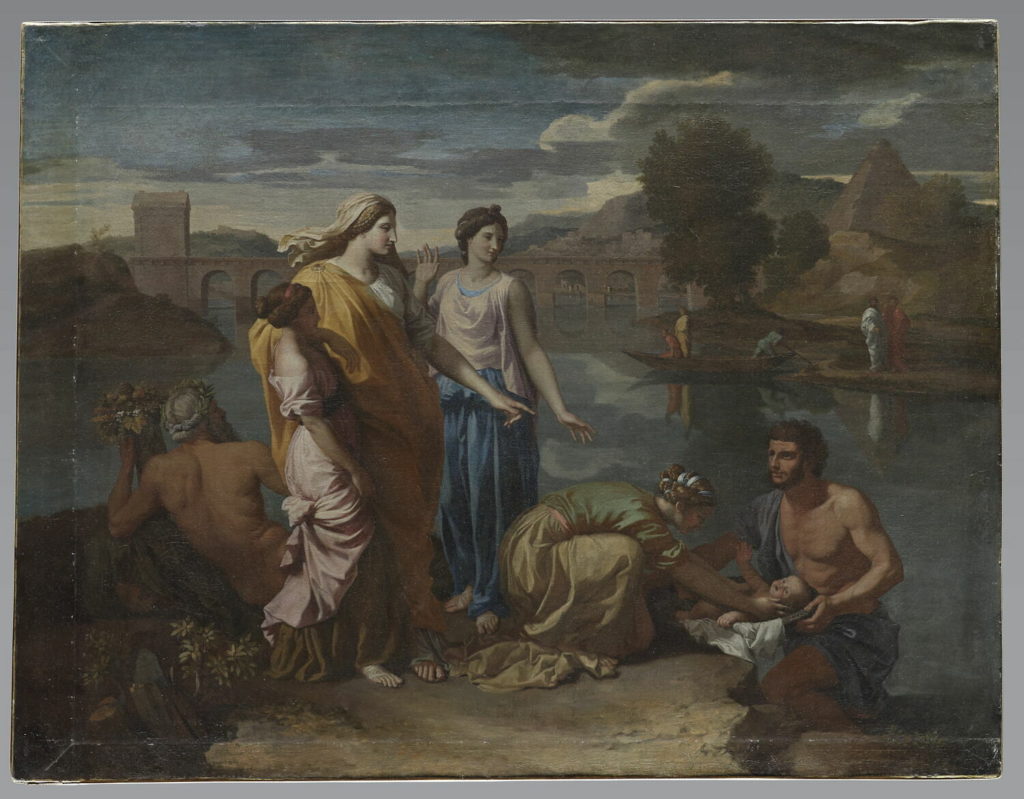
Nicolas Poussin (French, 1594–1665), The Finding of Moses, 1638, oil on canvas, H: 36.8 x W: 47.6 in (93.5 x 121 cm). Musée du Louvre, Paris, acc. no. INV 7271. © 2013 RMN-Grand Palais (Musée du Louvre) / Adrien Didierjean
In discussions among artists and writers on art within the Académie Royale de Peinture et de Sculpture, established in 1648 to provide direction as well as education for painters and sculptors, the espousal of classicism associated with Poussin and later celebrated by Charles Le Brun (1619–1690), the driving force behind the institution, was to be challenged by those claiming the importance of color as a vehicle for the emotional urgency of real life. This was voiced most effectively by Roger de Piles (1635–1709), initially with his Dialogue sur le coloris (1673).[13] The latter considered the Fleming Peter Paul Rubens to be exemplary in his warm colors, vivid painterly technique, and rich surfaces. An excellent example of de Piles’s criteria is found in Rubens’s visually exciting Adoration of the Magi (fig. 4). The Walters Balthazar is infused with Rubensian exuberance.

Peter Paul Rubens (Flemish, 1577-1640), The Adoration of the Magi, ca. 1619, oil on canvas, H: 384 x W: 280 cm. Royal Museums of Fine Arts of Belgium, Brussels, 1802, acc. no. INV 165
There are signatures in the form of Latin inscriptions in black paint on the backs of both Balthazar and Miracles, a common location for signatures in France around 1700. That on Miracles reads “I.A. GERIN PXIT / a.o 1691″ (fig. 5) (“Jacques Albert Gérin painted it/this in the year 1691”), offering a conventional use of square upper-case lettering in a Latin format with “I” for “J” and “pinxit” (painted it) rendered as “pxit,” a type of abbreviation not uncommon among painters probably more familiar with the Latin convention than with Latin itself.[14] The puzzling inscription on the Walters canvas (fig. 6) can be read “J[or P or J.P. in ligature] Gérin pinxit / 16 9″ (“J[P?] Gérin painted this / [date?]”). In the Sotheby’s auction catalog of January 17, 2017, it was recorded as J Gerin pinxit / 16?9, thereby supposing that the digits were the remnants of a date with the third digit missing.[15] This leaves the possibility of various dates compatible with Gérin’s career. The 1, 6, and 9 are clearly legible, but the apparent absence of even traces of black paint between the 6 and the 9 raises obvious questions of intention. In addition, the inscription on the Walters painting differs in other ways; for example, the single initial can more readily be read as a P than as a J when compared with the uppercase letters I A in the inscription on the documented painting. Jacques-Albert’s two oldest sons bore names beginning with P, but whether Pierre-Albert (born 1666) and Pierre-Jacques (born 1668) joined their father’s workshop, as did a younger son Jacques-Albert (born 1682), is unknown.[16] In any case it is too big a stretch to posit that an unrecorded workshop assistant in Valenciennes would produce such a bold image following the fashions of Versailles. An alternative understanding of the inscription is that it is later. It might record an inscription previously visible on the front of the canvas, as along the lower edge, which was then cut off. However, Eric Gordon, recently retired Head of Painting Conservation at the Walters Art Museum, confirmed that the cusping pattern along the lower edge is intact; thus the lower edge has not been altered.
Turning from Jacques-Albert Gérin, the following paragraphs build out my basic proposition that the painting is a product of the artistic circles surrounding the French court in the decades around 1700, reflecting current (1) conventions of African royal identity in the North African mode, (2) fashion for Eastern (or more particularly Persian) inspired silks, and how they were worn, as well as (3) aspects of artistic practice.
Following the widespread devastation of the Thirty Years War in Europe (1618–1648) and then years of internal rebellions in France against the crown, the onset of Louis’s personal rule in 1661 ushered in a half-century of the king’s strategic focus on strengthening the monarchy and on his role as divinely anointed king. This focus played out on a world stage that the grandeur of his palace at Versailles came to represent. The throngs of ambassadors, trade envoys, and noble personages from throughout Europe and across the world mingling with the aristocracy of France whom Louis obliged to live at Versailles created an immense market for portraits and allegorical history painting as well as prints and other publications celebrating status in its myriad forms, including fashion. One widely circulated manifestation of this was Nicolas Larmessin’s (ca. 1640–1725) important engraving series initially focused on portraits of “All the Kings of France” through “Louis the Great” but expanded to over 240 portraits of French nobles, men of letters, rulers, and diplomats from throughout Europe and the known world published over the years 1661–1691.[17]
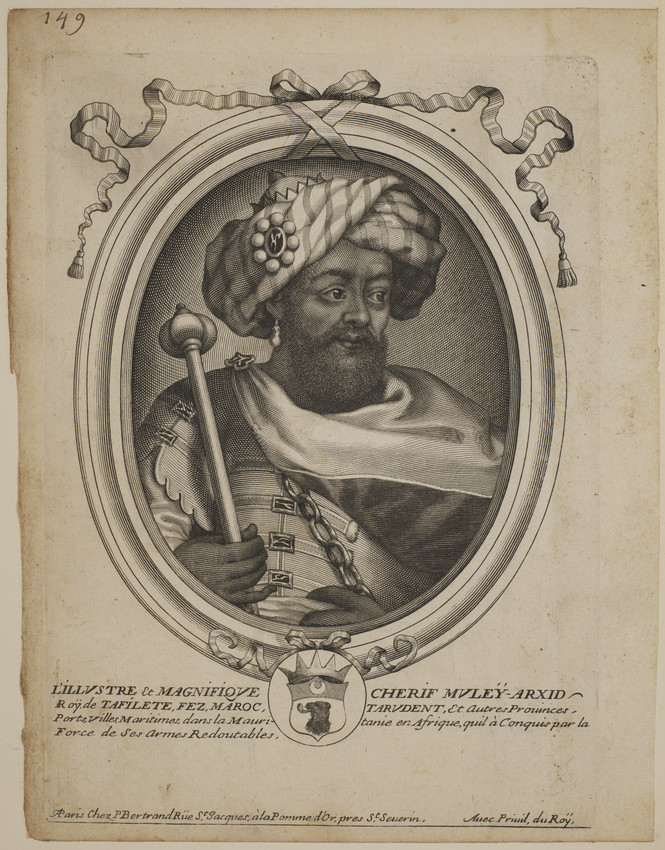
Nicolas de Larmessin (French, ca. 1640–1725), L’Illustre et Magnifique Cherif Muley-Arxid, 1680s, ink on paper. The Walters Art Museum, Baltimore, anonymous gift in memory of Ackneil M. Muldrow II, 2022, acc. no. 93.179
Larmessin’s engraved portrait portrait of Cherif Muley al-Rashid of Morocco and Fez (1631-1672) (fig. 7)—imaginary, as he was never in France—was very possibly a source for Balthazar’s costume. The separate features of the sultan’s costume may be found elsewhere but not so conveniently assembled and labeled as African royalty. Both men wear pendant pearl earrings and a turban of a silk defined by pale stripes of color and ornamented by a jeweled brooch.[18] While a European crown is incongruously tucked into the sultan’s turban, alerting the French viewer to his status as comparable to a European “king” (as indeed he is titled in the French inscription), it is Balthazar’s turban brooch with its closed royal crown that indicates his parallel status. Their coats are defined by frogging closures, long been associated with Islamic courts, while Balthazar’s off-shoulder velvet mantel features a brooch oddly located at shoulder height but not actually holding something together as the sultan’s does, suggesting that its placement may simply mimic the Moroccan’s.
These costume details are completed by sartorial touches reflecting current male fashion at the French court.[19] Balthazar’s coat is not the subdued shade of silk previously common at court, but a brilliant red silk with a repeating embroidered gold floral motif, either a Persian silk or a French imitation, of a type worn by French members of the court not much earlier than ca. 1690–1710.[20] This preference comes to the fore, for example, in the work of those portraitists most in demand by the elite, Hyacinthe Rigaud (1659–1743) and Nicolas de Largilliere (1656–1746). A coordinated brilliant silk, often a shade of red, might also serve as the lining of a velvet chamber robe, turned back, as is Balthazar’s mantel, to show the visual excitement of the rich fabric lining, seen, for example, in Rigaud’s ca. 1710 Portrait of a Man (fig. 8) or Largilliere’s 1696 Portrait of a Gentleman (High Museum of Art, Atlanta).[21] Since these men are depicted from the side, the effect of the vibrant silk with gold embroidery is discrete, relative to the boldly rich assertion of Balthazar’s nearly frontal pose, the latter more characteristic of half-length, idealized representations of historical figures, such as Rigaud’s St. Peter (fig. 9), than of portraits.
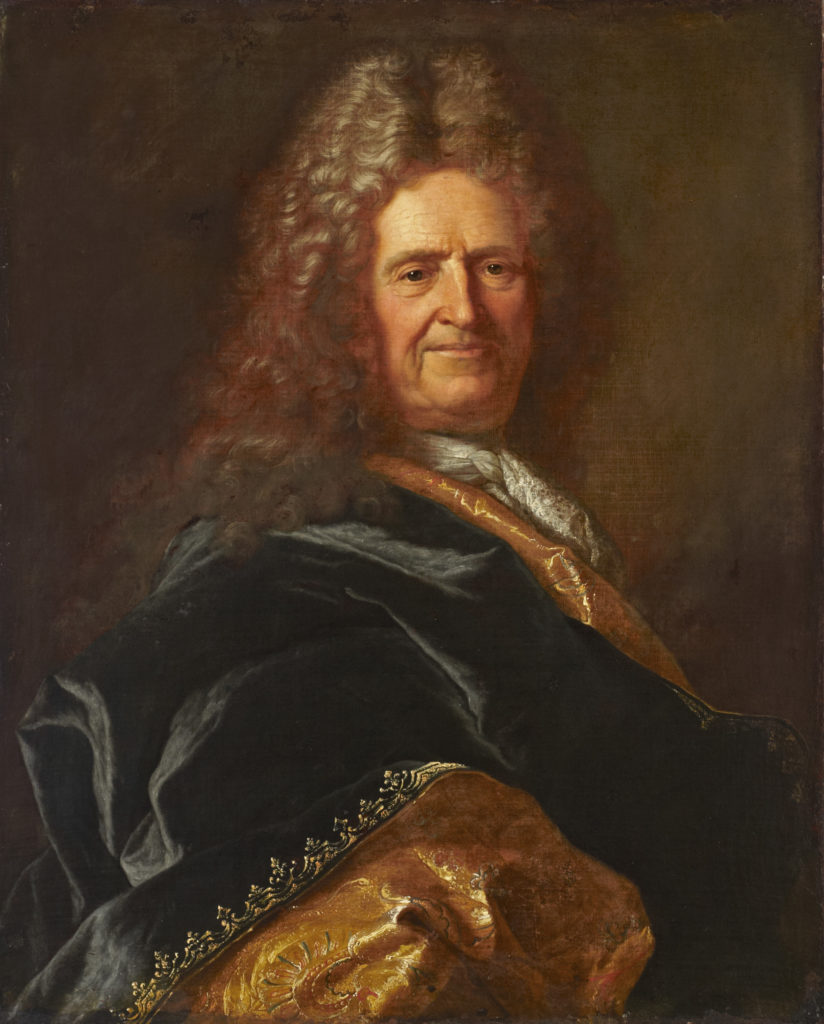
Studio of Hyacinthe Rigaud (French, 1659–1743), Portrait of a Man, eighteenth century, oil on canvas, H: 81 x W: 65.1 cm. Dulwich Picture Gallery, London, 1811, acc. no. DPG083.
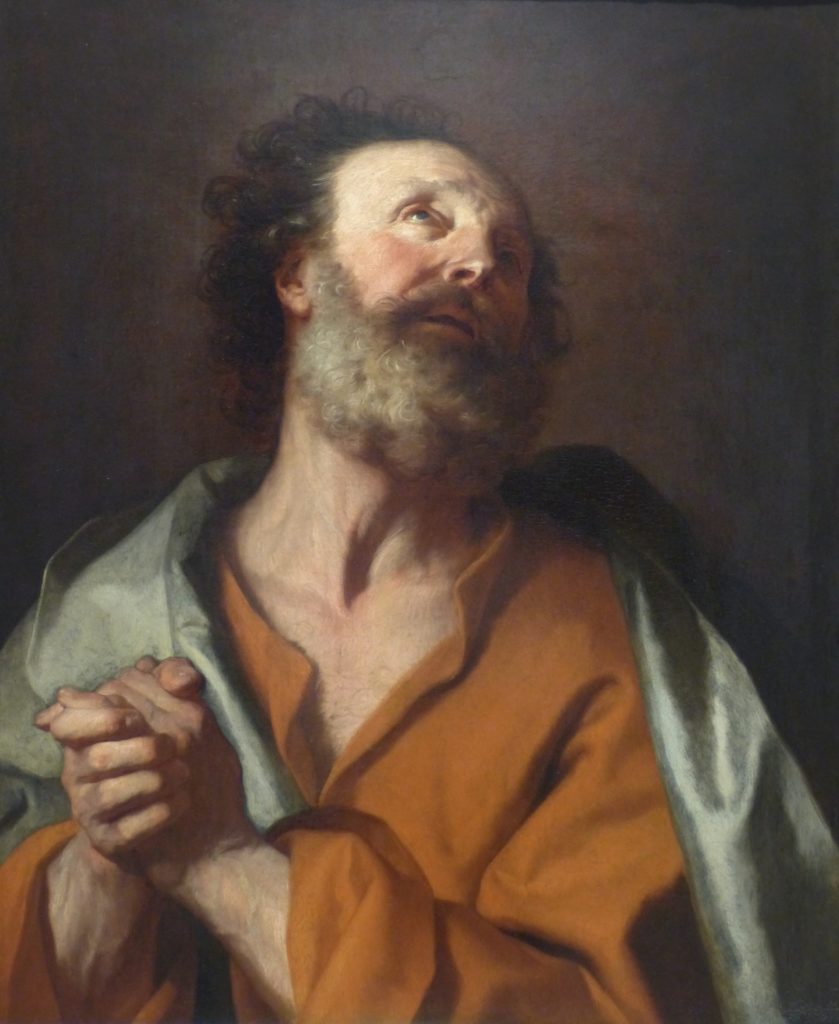
Hyacinthe Rigaud (French, 1659–1743), St. Peter, 1702, oil on canvas, H: 74.5 x W: 60.5 cm. Musée Hyacinthe-Rigaud, Perpignan, acc. no. 96.1.1
Earlier in the century, the romanticized figure of the exotic “Oriental” (including Muslim rulers of North Africa) had gained in popularity, resulting in imagery that at first glance may seem similar, for example in the vigorous, half-length figures of prophets and apostles from the 1620s and 1630s by Claude Vignon (1593–1670).[22] His costumes, as in his own King of Fez and Morocco, exhibit virtually no specifics of detailing or textiles and are commonly distinguished from Europeans by a turban or fantastical headdress accompanied by a luxurious mustache.[23] Readers may also bring to mind the splendid figured silks of Anthony van Dyck’s 1622 Portrait of Robert Shirley (Petworth House), English ambassador to the Shah of Persia, but Shirley is in his Persian court working clothes; this doesn’t signal shifts in English or continental European fashion. In sum, similarities in presentation to certain works from this period may indicate that the creator was looking back to this earlier period but are not determinants in dating (and attributing) Balthazar.
In terms of artistic practice, the uneven quality and style of execution in parts of the Walters painting is not due to damage but appears to result from a combination of hands. This points to a workshop: critical passages by a highly sophisticated observer and painter while the rest was completed by one or more assistants. The brilliant, painterly modeling and capture of transitory expression in the face, the deft brushstrokes evoking the shimmer of the diaphanous, striped silk of the turban, and the exquisite repoussé relief on the vessel are all simultaneously bold and infinitely subtle.[24] This is in contrast to the crudely sketched highlights of the blue velvet and the inadequate articulation of the man’s left shoulder. In addition, the initial layout of the composition, often executed by an assistant on the basis of the master’s sketch, is not centered well.
One artist was highly accomplished and apparently head of a workshop with assistants and a fashionable clientele, was active on either side of 1700 in the environment of the French court, used red brown under paint and modulated red-brown backgrounds, was adept at single-figure history subjects in this time period, and was in a position to consult Rubens’s approach to painting an adult male African’s face.
The one workshop that accommodates all these factors is that of Hyacinthe Rigaud, born in Perpignan and active in Paris almost continuously from 1681 until his death in 1743. In 1682, while studying history painting at the school of the Académie Royale de Peinture et de Sculpture, he found an unexpected supporter for his portraiture in Charles Le Brun, rector of the Academie and Louis XIV’s premier peintre (first painter).[25] Thereafter his access to court clientele was assured, epitomized by his 1701 iconic Portrait of Louis XIV (Musée du Louvre).[26]
The scale of production within Rigaud’s workshop around 1700 was large, as indicated by his account book, including payments to him from clients and also his payments to assistants for repetitions of garments, filling in specialized details, laying out compositions, and complete copies.[27] According to recent scholarship, these seemingly meticulous listings still did not, however, include all his endeavors.[28]
Many painters around 1700 employed some variation of the dark rust-red ground used here. Rigaud, as well, often introduced a dark red-brown for the rear ground so that the sitter appears to emerge from it, as here.[29] However, as Jan-Baptiste Oudry (1686–1755) subsequently pointed out in a lecture at the Academie, this was not a good idea as it caused dark colors to sink back into the canvas, as has happened here to the detriment of the viewer’s experience today.[30] Originally, the contrast with the variegated white of Balthazar’s turban was surely not as great. Nevertheless, the way that the vertical strokes of white paint applied with a fairly dry brush to the front of the turban produce a slightly scumbled effect is brilliant. It creates a remarkably illusionistic effect from even a few feet away. The technique is comparable to the masterful way Rigaud manipulated a scumbled effect in white paint in his oil studies, as that of a Helmet and Cuirass.[31]
Rigaud appears to be the only artist of fashion from this period to depict half-length biblical figures, as St. Peter of 1702 (fig. 9).[32] The saint’s frontal, straightforward stance, weathered complexion brought out by patched areas of color, and powerful hands complement the frank spiritual commitment seen in the face, demonstrating the artist’s agility in shifting his manner of painting and choice of presentation to suit the desired affect and offering parallels to Balthazar.
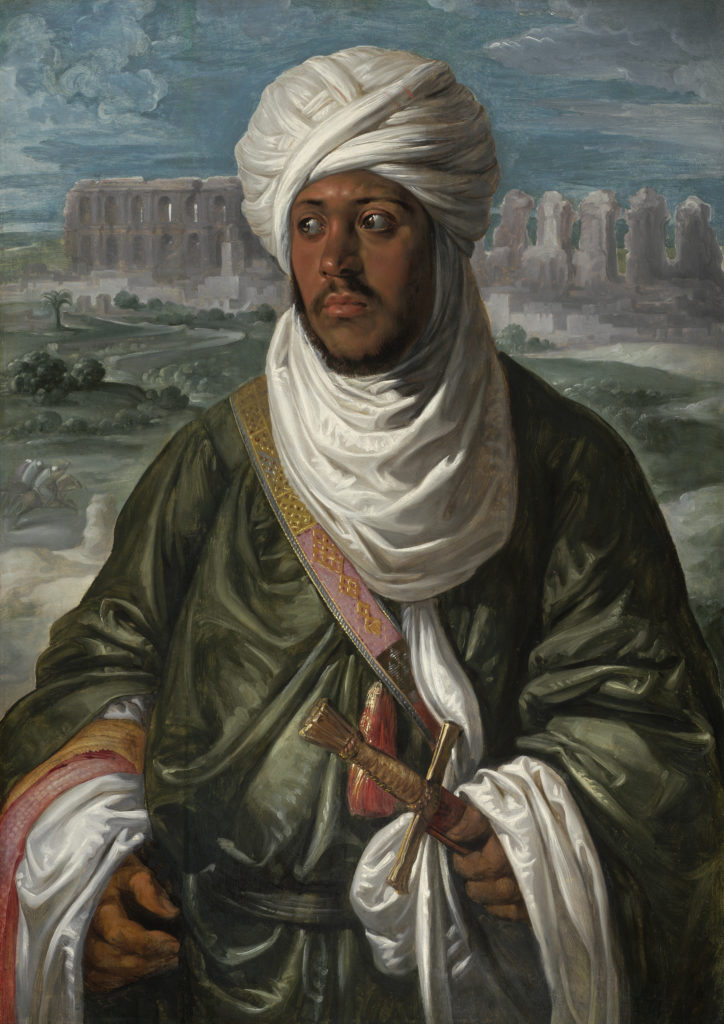
Peter Paul Rubens (Flemish, 1577–1640), Mulay Ahmad, ca. 1609, oil on panel. Museum of Fine Arts, Boston, M. Theresa B. Hopkins Fund, 1940, acc. no. 40.2
That Balthazar positively exudes vigor is a consequence of the assured, bold modeling of his broad face with its appealing air of expectancy. The style of modeling observable in the face seems curiously out of sync with the dating imposed by the sartorial details described above. While the area of the mouth is defined by precise, smoothed brushwork based on careful observation of the chiseled lip line and brown full lips, the cheeks and forehead are creamy and rich with a subtle mixing of color, especially various reds, applied with a loaded brush and intentionally left incompletely blended. This is not the smooth finesse with which painters such as Rigaud or his contemporaries painted noble faces, as the Portrait of a Man illustrated above (fig.8). But Rubens commonly used this approach for vigorous male faces, especially of figures from history or from distant countries, as in the rendering of the Black magus or king in his Adoration paintings, for example in the Adoration cited above (fig. 4) or his portrait of Mulay Ahmad (figs.10 and 11).[33] Rigaud, alone among his fellow French painters of the time, owned an Adoration of the Magi by Rubens (signaled in 1703), although which one is unknown.[34] I suggest that in this case, the artist, probably Rigaud, painting a Black man up close in full face for the first time, looked to Rubens as a model for how to best convey the rich play of color that makes up Balthazar’s complexion. Then the artist introduced a pale yellow highlight down the nose and “lighted” the eyes—with a white dot on the pupil and a short white line slightly to the lateral side of the lower lid, both details as in, for example, Rigaud’s Portrait of a Man (fig. 8) and his Self Portrait of 1698 (Musée Hyacinthe Rigaud, Perpignan). The Rubensian character of the face can easily appear to be out of alignment with the attribution to Rigaud’s workshop until the likelihood of this choice being a purposely adopted strategy is considered. So, I am proposing that a painting could be produced in Rigaud’s workshop, with his participation, but be sufficiently inconsistent with the majority of his best known works that it is not easily recognizable as such.

Detail of face, Balthazar, acc. no. 37.2938 (left); and detail of face, Peter Paul Rubens, Mulay Ahmad, acc. no. 40.2 (right)
In addition, Rigaud and his workshop produced at least twenty paintings including an adolescent Black boy, marked as enslaved by his silver collar, alone or waiting on a white aristocrat. My list is likely not complete, but it looks as if Rigaud and his workshop may have produced more works involving a Black person than any other European workshop of his time.[35] The relevant works are datable from 1690 to 1715, exhibiting a remarkable shift in perception in 1700. Prior to this, as in Rigaud’s 1692 Portrait of Marie-Anne Mancini (Musée Duplessis), the boys are stock figures, depicted largely in shadow at the back or side and possibly adapted by Rigaud’s assistants from fashion prints of the day.[36] They serve as easily understood, repeatable attributes of power. David Bindman locates the beginning of this popular format in France in the work of court painters Pierre Mignard (1640–1725) and François de Troy (1645–1730), in the early 1680s, as the court moved to Versailles and signs of status became important.[37] From 1700, however, the youth is sensitively interpreted, with the nuances of a study from life. He is often in front, in which position his delicate features and unhappy expression come quickly to the eye of the viewer. What caused this change of perception, seemingly a recognition of the youth’s humanity? Could that have been the encounter with the model for Balthazar? Although it falls far beyond the scope of this note, I will argue in a future publication that the sitter, a West African prince on a prolonged stay at Versailles, commissioned the piece.
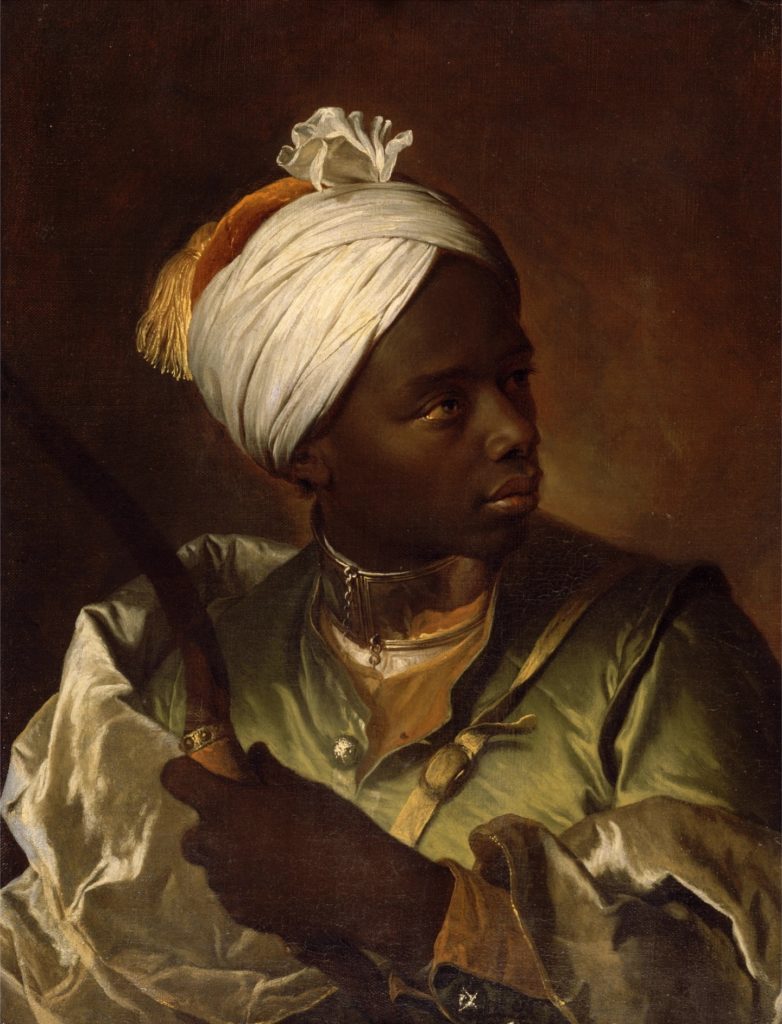
Hyacinthe Rigaud (French, 1659–1743), Portrait of an Enslaved African with a Hunting Bow, before 1715, oil on canvas, H: 56.5 x W: 43 cm. Musée des Beaux Arts, Dunkerque, 1982, acc. no. BA.1982.003.1
All the renderings of the enslaved youth from this point, following the 1701 Portrait of Catherine Marie Le Gendre de Villedieu (current collection unknown) share a marked resemblance. The same youth is represented alone in two extant paintings—the sensitive and almost painfully revealing Portrait of an Enslaved African with a Hunting Bow (fig. 12) by Rigaud and a Head of a Moor that more recently has been attributed to Rigaud. As has been proposed, these may be the two heads in gold frames noted in the inventory of the artist’s possession at his death.[38] There is also a reference in Rigaud’s account book for 1702 under “copies” made by the assistant Adrien Prieur to a painting or sketch of “Les mains et la tête du morre” (the hands and the head of the Black).[39] If the reference to “the” Black man rather than “a” Black man is intentional, then this should be a studio reference piece after a pre-existing painting or after the preliminary study for that painting. Within the present state of knowledge of Rigaud’s workshop, that painting could well be this Balthazar.
My thanks to Aaron Wile, Julia Marciari-Alexander, Eric Gordon, Charly Bailly, Anna Clarkson, Gérard Chouin, Bruno Guilois, Debra Pincus, Aaron Hyman, Vincent Hadot, and my curatorial colleagues at the Walters for sharing research, images, and comments.
[1] Balthazar came to my attention in the Sotheby’s New York auction, January 2017, where it was described as from a French private collection. At the auction it was bought in. Upon subsequent inquiry through the intermediary of Sothebys, the painting’s history was expanded: it had been in the possession of a French family for many years before being acquired at a small French auction (date and place unspecified). To this I can now add that it had been purchased in France by Charly Bailly Fine Art (Paris and Geneva) around 2008 or 2009, having been in a French family for many years (personal communication). It remained in the firm’s possession until at least 2012 when it was advertised in the Burlington Magazine (July 2012). In December 2018, the Walters acquired Balthazar by private sale from the unnamed owner, facilitated by Sotheby’s.
[2] For an overview of the following iconography, see Gertrude Schiller, Iconography of Christian Art, Vol. 1 (Greenwich, CT: New York Graphic Society, 1971), 94–114.
[3] Pseudo Bede, Excerpta et Collectanea (Migne, Pl94. 539D). The names were more firmly established by their use by Jacobus Voragine in his Golden Legend (Legenda Aurea), compiled in the late 1200s but subsequently widely printed in many languages. See the chapter on “The Feast of the Epiphany” where he cites Bede.
[4] The Old Testament prophecies in Isaiah: 60, 1-4 and Psalms: 72, 10 of the homage that the kings of this earth would pay to Israel’s messiah were among those interpreted as anticipating the arrival of the “wisemen.”
[5] For the larger topic, see Paul Kaplan, The Rise of the Black Magus (Ann Arbor: UMI Research Press, 1985); Joaneath Spicer, Revealing the African Presence in Renaissance Europe (Baltimore: Walters Art Museum, 2012; and Thomas Koerner, “The Epiphany of the Black Magus,” in David Bindman and Henry Louis Gates, Jr., eds., Image of the Black in Western Art, Artists of the Renaissance and Baroque (Cambridge MA: Harvard University Press, 2010), 7–92.
[6] On Gérin, see Paul Marmottan, Jacques-Albert Gérin: Peintre Valenciennois du XVII Siècle (Paris: E. Lechesahès, 1893); Paul Foucart, “Antoine Watteau à Valenciennes,” Réunion des sociétés des beaux-arts des départements 16 (1892): 529–60; André Mabille de Poncheville, “Trésors d’Art du Nord de la France,” Bulletin de la Classe des Beaux-Arts 42 (1960): 23–39 at 38; Nicole Parmantier, “Les amis de Watteau,” in Margaret Morgan Grasselli and Pierre Rosenberg, eds., Watteau: 1684–1721, exh. cat. (Washington: National Gallery of Art, 1984), 33–52 at 38–39; and Jean Claude Poinsignon, “Gérin, Jacques-Albert (1632),” Allgemeines Künstlerlexikon: Die Bildenden Künstler Aller Zeiten und Völker 52 (Leipzig: K.G. Saur, 2021), online, accessed September 17, 2021.
[7] Gabriel-Antoine-Joseph Hécart, Biographie Valençenoise (Valenciennes: J.B. Henry, 1826), 6.
[8] Heinrich Göbel, Tapestries of the Lowlands (New York: Brentano’s Inc, 1924), 84.
[9] Marmottan, Gérin, 9. The entry on Miracles of St. Giles in Joconde, reports it as “thought to be one of the eight paintings on the ‘life of St. Giles’ commissioned by the city government of Valenciennes in 1681.” This is improbable since the paintings delivered in 1683 would have been cartoons made for the desired tapestry series and the painting on canvas in question is dated 1691.
[10] Foucart, “Antoine Watteau à Valenciennes,” 541.
[11] On Poussin, see Jacques Thuillier, Nicolas Poussin (Paris: Flammarion, 1995); and Anthony Blunt, … The Paintings of Nicolas Poussin, a Critical Catalogue (London: Phaidon, 1966).
[12] Blunt, Poussin, no. 12.
[13] On the debate between Poussinists and Rubenists, see Bernard Teyssèdre, Roger de Piles et les débats sur le coloris au siècle de Louis XIV (Paris: Bibliothèque des Arts, 1965); Michèle-Caroline Heck, Le rubénisme en Europe aux XVIIe et XVIIIe siècles (Turnhout: Brepols, 2005), especially, “Y a-t-il eu une querelle du rubenisme a la Academie royal de Peinture et de sculpture?” 159–71; Thomas Puttfarken, Roger de Piles’ Theory of Art (New Haven: Yale University Press, 1985); and E. Delapierre, M.Gilles, H. Portiglia, ed. Rubens contre Poussin: La querelle du coloris dans la peinture française à la fin du XVIIe siècle (Ghent: Ludion, 2004).
[14] My thanks to Vincent Hadot of the Musée des Beaux arts de Valenciennes for sending me a photo of the signature.
[15] Sotheby’s New York January 2017, lot 158.
[16] Foucart, Watteau, 560.
[17] Nicolas Larmessin, Les augustes représentations de tous les rois de France, depuis Pharamond jusqu’à Louis XIV,… avec un abrégé historique sous chacun, contenant leurs naissances, inclinations et actions plus remarquables pendant leurs règnes (Paris, sheets issued with dates from 1661 to 1691).
[18] The pale swath behind Balthazar’s neck is the hanging tails of his turban. This detail and the stand collar are found in Larmessin’s Portrait of Shah Abbas of Persia.
[19] For an overview, see Philip Mansel, Dressed to Rule: Royal and Court Costume from Louis XIV to Elizabeth II (New Haven: Yale University Press, 2008). I have not been able to identify a publication addressing specifically the details noted here.
[20] In France, as in many parts of Europe, there had long been curiosity, even preoccupation, with the “Orient,” primarily focused on the lands at the eastern end of the Mediterranean or “Levant,” as it was also known then. However, in France it was only in the 1660s that a preoccupation with the cultures of the Levant, first of all Persian and Turkish, became a matter of crown policy. For Orientalism in seventeenth-century France, see Ina Baghdiantz McCabe, Orientalism in Early Modern France (Oxford: Berg, 2008) and Nicholas Dew, Orientalism in Louis XIV’s France (Oxford: Oxford University Press, 2009). For the textile trade, see Joyce Denney, “Silk along the Seas: Ottoman Turkey and Safavid Iran in the Global Textile Trade,” and Melinda Watt, “‘Whims and Fancies’: Europeans Respond to Textiles from the East,” in Amelia Peck, ed., Interwoven Globe: The Worldwide Textile Trade, 1500–1800 (New York: Metropolitan Museum of Art, 2013), 56–65 and 82–103.
[22] For an overview of Vignon, see Paola Pacht Bassani, Claude Vignon, 1593–1670 (Paris: Arthena, 1992).
[23] See the engraving by Jerome David (French, ca. 1600–1662), The King of Fes and Morocco, after Vignon, 1610–1647, ink on paper. The British Museum, London, acc. no. 1982,U.2886, plate 17 from a series of 36 fantasy figures. See also Vignon’s numerous Adoration of the Magi/Kings paintings, such as that of 1624–1626 in the Birmingham Museum of Art, acc. no. 1979.5, the headdresses of the Eastern and African kings are festooned with ostrich feathers, their European crowns tucked discreetly into the base, while their robes are heavy and rich but lack specificity of style or textile.
[24] In the X-radiograph, the only areas defined by the presence of white lead are, not surprisingly, the silver vessel with its high relief and the turban.
[25] Two authors dominate current research on Rigaud, see Stéphan Perreau, Hyacinthe Rigaud, 1659–1743: Le peintre des rois (Montpellier: Les Nouvelles Presses du Languedoc, 2004); Stéphan Perreau: Hyacinthe Rigaud, catalogue raisoné de l’oeuvre ; and Ariane James-Sarazin, Hyacinthe Rigaud (1659–1743), catalogue raisonné (Paris: Faton, 2016). From here on I will introduce numerous links to Perreau’s website catalogue and therefore to his catalogue numbers, a wonderful resource.
[26] James-Sarazin, Rigaud, 98–105.
[27] Joseph Roman, Le Livre de Raison du peintre Hyacinthe Rigaud (Paris: Henri Laurens, 1919).
[28] For examples of portraits by Rigaud that are not cited in his account book include, just for 1698 and 1699, see Perreau, Rigaud, Johannes Frisching, P.1447; Ippolito Durazzo, P. 536; The Family Le Juge, P.645; and Alexandre Passerat, P.sup.3*.
[29] The variations in painting styles within Rigaud’s workshop—in comparison with Balthazar—needs more research.
[30] Jan-Baptiste Oudry, Discourse on the Practice of Painting and its Main Processes: Underpainting, Overpainting, and Retouching, Delivered to the Acadèmie royale 2 December 1752 (Los Angeles: Getty Trust, 2008).
[31] For Rigaud’s drawings and studies, see James-Sarazin, Riguad, 348–76.
[32] Perreau, Rigaud, St. Peter, P.769.
[33] Elizabeth McGrath, “Rubens and his Black Kings,” in Rubens Bulletin 87 (2008): 87–101. My thanks to Aaron Hyman for talking through the apparent adaptation from Rubens with me.
[34] Alexis Merle du Bourg, “Rubens en France au XVIIe siècle: Tableaux, cartons et esquisses,” in Tim Baringer, ed., Rubens and his Legacy (London: Royal Academy Books, 2014), 5–20 at 16, referring to an Adoration de mages, owned by 1703.
[35] See my Chart of portrait paintings by Rigaud and his assistants that feature an African adolescent or depict one in attendance on the sitter.
[36] Perreau, Rigaud, Marie-Anne Mancini, P.294.
[37] David Bindman and Helen Weston, ”Court and City: Fantasies of Domination,” in Image of the Black in Western Art 3.3. From the Age of Discovery to the Age of Abolition, the Eighteenth Century (Cambridge, MA: Harvard University Press, 2011), 128–70.
[38] See Stephan Perreau, Le pinceau mauresque de Hyacinthe Rigaud (blog of December 27, 2019).
[39] Roman, Livre de raison, 97.
